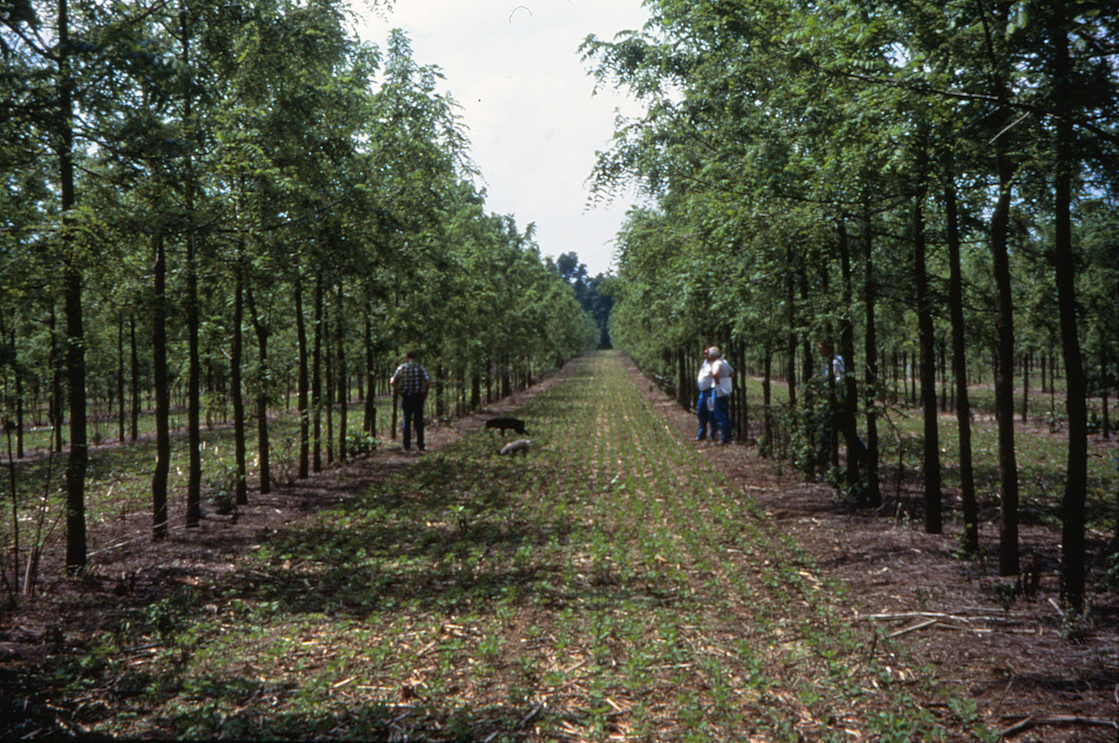
Agroforestry could help agriculture mitigate climate change
Agroforestry is an agricultural system that combines crops and livestock with trees on the same area of land. It’s popular in developing countries due to its ability to allow small shareholder farmers with little available land to maximize their resources. Farmers can plant vegetable and grain crops around trees that produce fruit, nuts, and firewood. Trees also provide shade for the animals that provide milk and meat.
Along with the benefit of maximizing land use, researchers from Penn State have found that agroforestry could also play a role in mitigating climate change, as it sequesters more atmospheric carbon in plant parts and soil than conventional agriculture. Researchers assessed data from 53 published studies from around the world — all tracking changes in soil organic carbon after land conversion from forest to crop cultivation and pasture-grassland to agroforestry.
The results showed that the transition from agriculture to agroforestry significantly increased soil organic carbon an average of 34 percent. Conversion from pasture/grassland to agroforestry resulted in average soil organic carbon increases of roughly 10 percent. And although forests sequester about 25 percent more carbon than any other land use, agroforestry stores significantly more carbon than agriculture, on average.
“We showed that agroforestry systems play an effective role in global carbon sequestration, involved in carbon capture and the long-term storage of atmospheric carbon dioxide,” says Michael Jacobson, a professor of forest resources at Penn State. “The process is critical to mitigating or deferring global warming.”
Andrea De Stefano, lead researcher and a graduate student at Penn State during the study, points out that carbon was not stored equally in different soil levels. “The conversion from forest to agroforestry led to losses in soil organic carbon stocks in the top layers, while no significant differences were detected when deeper layers were included,” explains De Stefano. “On the other hand, the conversion from agriculture to agroforestry increased soil organic carbon stocks at all levels, in most cases.” They also observed significant increases in the top layers in the transition from pasture/grassland to agroforestry.
Although prior research has previously shown that forests are greater storages of carbon than agricultural systems, this study is the first to show that agroforestry lies somewhere in between the two when it comes to carbon sequestration.
In countries in the tropics — such as Brazil, Kenya, and Indonesia — government programs are paying farmers to grow trees on their land to mitigate climate change. It is a strategy that is widely embraced where farmers are poorer and in need of such economic benefits. “In the United States, you can see agroforestry much more from an environmental point of view and the economic benefits — while important — are secondary,” says Jacobson. “But in the tropics, you must have the economic benefits to make it work or farmers won’t do it. Most only have an acre or two of land and they need all these products for their families to survive, so the trees are vital. That is an important distinction, I think.”
While agroforestry is closely connected to the sustainable agriculture movement in the United States, it still is not a heavily-integrated practice. Jacobson explains, “Unfortunately, there is a tendency to treat agriculture and forestry separately when addressing natural-resource concerns, but agroforestry offers a set of conservation and production technologies that can help to integrate forestry and agriculture efforts beyond carbon cycles, such as water quality and biological diversity.”
—
By Connor Ertz, Earth.com Staff Writer
Image Credit: USDA National Agroforestry Center













